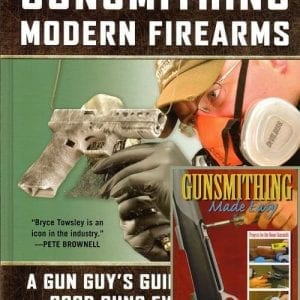Part One
 As taught by Todd Rassa, at the Sig Sauer Academy.
As taught by Todd Rassa, at the Sig Sauer Academy.
 All the drills are from a concealed carry holster using concealment garments and are unsighted, instinctive shooting. Do not use a timer for any of these drills. That’s because the focus should be on executing the moves perfectly every time, not on how fast you can do it. If you are focusing on speed, your mind is in the wrong place. The speed will come with practice.
All the drills are from a concealed carry holster using concealment garments and are unsighted, instinctive shooting. Do not use a timer for any of these drills. That’s because the focus should be on executing the moves perfectly every time, not on how fast you can do it. If you are focusing on speed, your mind is in the wrong place. The speed will come with practice.
 The first drill starts with the shooter standing about 2 feet from the target. On the command, the shooter will move his weak or support hand into a block or strike position as he draws his pistol with his strong hand. The weak hand position is chin high, to the side, elbow bent and tucked into the body. This is counter to the training that a lot of us have received, where we bring the weak hand to the center of our body to pick up the pistol for support. But we are not going to use the weak hand for support when shooting. If you bring it to the center of the body, you have no power for a strike or a block. From the side position, you can strike or block with power. The strong hand draws the gun and fires two shots as fast as possible.
The first drill starts with the shooter standing about 2 feet from the target. On the command, the shooter will move his weak or support hand into a block or strike position as he draws his pistol with his strong hand. The weak hand position is chin high, to the side, elbow bent and tucked into the body. This is counter to the training that a lot of us have received, where we bring the weak hand to the center of our body to pick up the pistol for support. But we are not going to use the weak hand for support when shooting. If you bring it to the center of the body, you have no power for a strike or a block. From the side position, you can strike or block with power. The strong hand draws the gun and fires two shots as fast as possible.
Don’t get into the rut of a double tap. Practice with two shots, then three or four, even five. One shot is never a good idea, due to the close proximity of the threat. You must take this guy out as fast as possible and that means shooting until the threat is eliminated.
 The first position is to place the elbow on the holster after drawing and before shooting. This helps to orient the shooting hand. Of course, it assumes a side carry belt holster. If you carry in another position, the elbow will tuck in on your side above where the holster would be. This position allows for instinctive shooting at close range and closes much of the distance to the target to help insure shots on center of mass. It also positions the hand to quickly transition to a high two-hand hold, using the sights for a longer follow up shot. The down side is that it presents the pistol out from your body, where it is easier to grab it.
The first position is to place the elbow on the holster after drawing and before shooting. This helps to orient the shooting hand. Of course, it assumes a side carry belt holster. If you carry in another position, the elbow will tuck in on your side above where the holster would be. This position allows for instinctive shooting at close range and closes much of the distance to the target to help insure shots on center of mass. It also positions the hand to quickly transition to a high two-hand hold, using the sights for a longer follow up shot. The down side is that it presents the pistol out from your body, where it is easier to grab it.
 The next drill uses the same technique, but places the forearm on the holster rather than the elbow. This keeps the gun back closer to your body and presents a lot less for the bad guy to grab. It also opens some distance between you and the target.
The next drill uses the same technique, but places the forearm on the holster rather than the elbow. This keeps the gun back closer to your body and presents a lot less for the bad guy to grab. It also opens some distance between you and the target.
 The third drill places the wrist of the shooting hand on the holster. This keeps the gun tight to your body and presents much less of it for a bad guy to grab. This is more secure for ultra-close range work.
The third drill places the wrist of the shooting hand on the holster. This keeps the gun tight to your body and presents much less of it for a bad guy to grab. This is more secure for ultra-close range work.
The down side of the wrist on the holster technique is that the slide of the gun can catch on your clothing and jam the pistol. To counter this, turn the gun sideways with the slide away from your body and with the bottom of the magazine jammed into the side of your belly, just above the belt.
 The High-Tuck position has the gun high and drawn back to your chest with the thumb of your shooting hand against your pectoral muscle. This keeps the gun back against you and out of reach for the bad guy, but also high for a fast transition to your line of sight if you need to move to a longer range target.
The High-Tuck position has the gun high and drawn back to your chest with the thumb of your shooting hand against your pectoral muscle. This keeps the gun back against you and out of reach for the bad guy, but also high for a fast transition to your line of sight if you need to move to a longer range target.
 Another very good technique is based on Paul Castle’s C.A.R. (Center Axis Relock) position. This is another high gun technique. You draw the pistol, grabbing it with two hands and then tuck it in high on the center of your chest, pointing to your weak side. With Todd’s variation of the technique you turn the magazine into your body so the gun is parallel to the ground. At the same time you take a step back with your strong side foot and turn your body so you are bladed to the target, weak side closest, with both elbows stuck out the sides and tucked back like chicken wings. This keeps the gun tucked in tight to your body; you have a two hand hold and have half your body, including the support side elbow, between you and the target. This gives you more options in keeping the bad guy off you and retaining your pistol. Shooting is of course instinctive, but the range is so close that it’s easy to hit the target.
Another very good technique is based on Paul Castle’s C.A.R. (Center Axis Relock) position. This is another high gun technique. You draw the pistol, grabbing it with two hands and then tuck it in high on the center of your chest, pointing to your weak side. With Todd’s variation of the technique you turn the magazine into your body so the gun is parallel to the ground. At the same time you take a step back with your strong side foot and turn your body so you are bladed to the target, weak side closest, with both elbows stuck out the sides and tucked back like chicken wings. This keeps the gun tucked in tight to your body; you have a two hand hold and have half your body, including the support side elbow, between you and the target. This gives you more options in keeping the bad guy off you and retaining your pistol. Shooting is of course instinctive, but the range is so close that it’s easy to hit the target.
Part two will have more on close quarter fighting, including using a knife for gun retention..




